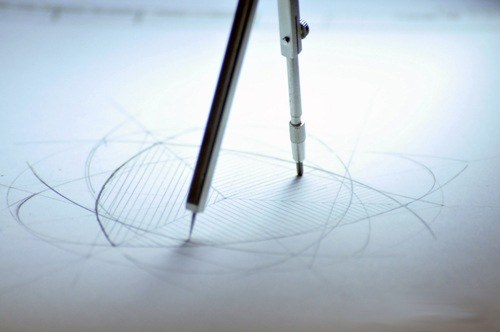You will need
- Calculator, roulette or the tape
Instruction
1
The lateral surface of the cylinder in the expanded view is a rectangle.
The formula for calculating the area of the cylinder surface is simple:
Bok = LхH
where Bok — the desired lateral surface area of a cylinder.
The right part of the equality represented by the product of the two multipliers:
L is the measured length of the circumference of the cylinder, H is its height.
In turn, the circumference at the base of the cylinder is calculated by the formula:
L=PI x D
where PI — the number PI is a constant and is equal to 3.1416
D — diameter circle at the base of the cylinder.
A practical method of determining the area of the cylinder surface is chosen according to circumstances.
The formula for calculating the area of the cylinder surface is simple:
Bok = LхH
where Bok — the desired lateral surface area of a cylinder.
The right part of the equality represented by the product of the two multipliers:
L is the measured length of the circumference of the cylinder, H is its height.
In turn, the circumference at the base of the cylinder is calculated by the formula:
L=PI x D
where PI — the number PI is a constant and is equal to 3.1416
D — diameter circle at the base of the cylinder.
A practical method of determining the area of the cylinder surface is chosen according to circumstances.
2
Write down all your existing data on the cylinder, the lateral surface area which you need to determine.
If you know the height and diameter of the cylinder, then simply substitute in the formula for these parameters. Knowing the height and diameter of promotional stands, we can calculate the size of the poster. It is absolutely not necessary to see and measure cylindrical pedestal, on which is placed the poster.
If you know the height and diameter of the cylinder, then simply substitute in the formula for these parameters. Knowing the height and diameter of promotional stands, we can calculate the size of the poster. It is absolutely not necessary to see and measure cylindrical pedestal, on which is placed the poster.
3
Take a tape measure or measuring tape to determine the circumference of a circle at the base of the cylinder, if the cylinder is unknown.
In the absence of a flexible measuring tool you can do any rope, twine or braid. The circumference of the base of the cylinder define with a rope. The resulting segment of the rope, measure any measuring tools, such as tailor's ruler.
In the absence of a flexible measuring tool you can do any rope, twine or braid. The circumference of the base of the cylinder define with a rope. The resulting segment of the rope, measure any measuring tools, such as tailor's ruler.
4
Define the height of the cylinder.
When measuring the height of the cylinder, it is important to adhere strictly to the vertical to obtain an accurate result. To define the line vertical also useful for rope, the ends of which is tied to any load. For example, conventional nuts. One end of the rope attach to the base of the cylinder. Rope under the weight of the load is strictly vertical position. Along the line vertical and should be measure the height of the cylinder.
Multiply the two received measurements of the parameter. The result of the multiplication is the lateral surface area of a cylinder.
When measuring the height of the cylinder, it is important to adhere strictly to the vertical to obtain an accurate result. To define the line vertical also useful for rope, the ends of which is tied to any load. For example, conventional nuts. One end of the rope attach to the base of the cylinder. Rope under the weight of the load is strictly vertical position. Along the line vertical and should be measure the height of the cylinder.
Multiply the two received measurements of the parameter. The result of the multiplication is the lateral surface area of a cylinder.
